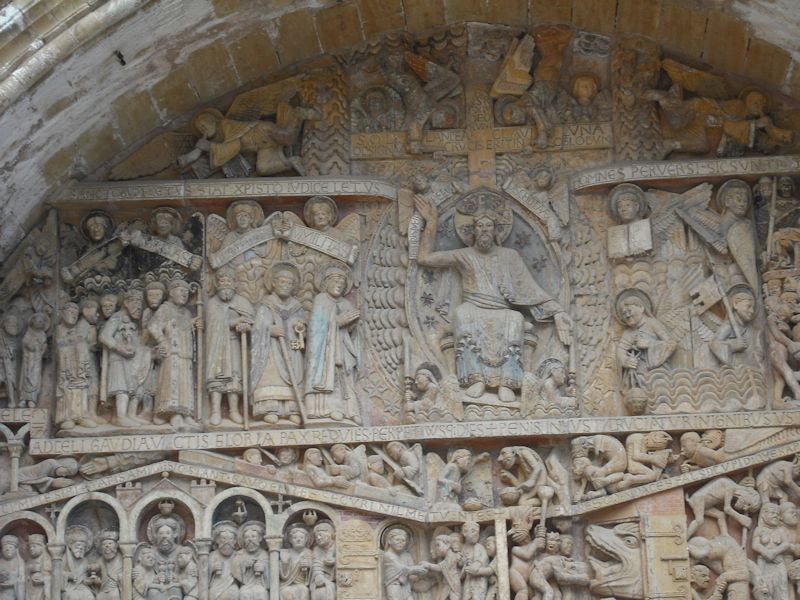Maddening months at work, trying to migrate a very large Web site to a different technology, and no end in sight. It's time to take a break and, as luck would have it, Kristin's coming for a visit. We'll go to France for a while.
. . . . and here we've fetched up in Conques!
You
may not find this terribly rewarding unless you're included here, so this is a
good time for casual and random browsers to turn back before they get too caught
up in the sweep and majesty of the proceedings and can't let go.

Having neatly established ourselves in the chambres d'hôtes the Maison de la Ronade in Salers, in the Auvergne region, we're taking a day to motor southward through trafficky Aurillac to the medieval vestige called Conques, where we expect (based on our researches in the guidebooks) to view the most astonishing medieval vestiges and eat an omelette.
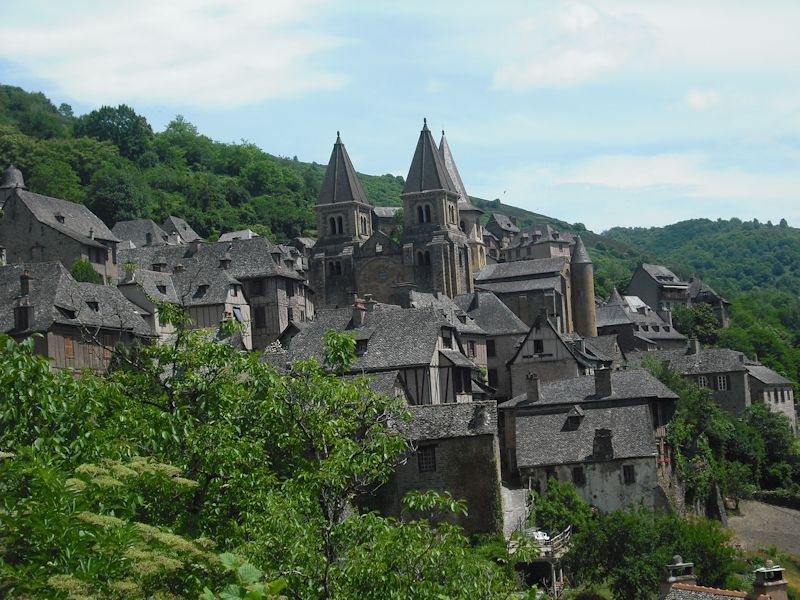
So far so good. Many of us would ask no more of an urban skyline than this. Look at these spirey symmetries, and those authentic-looking roof tiles. It's like coming home.
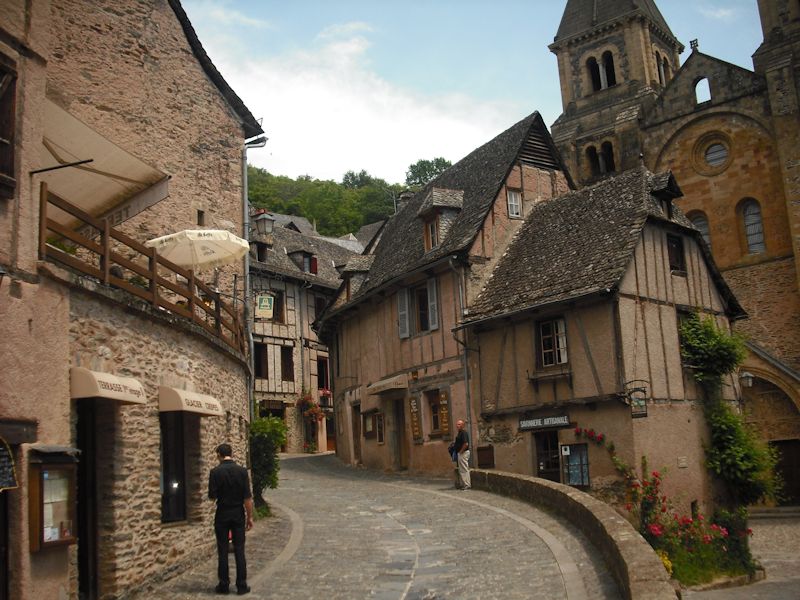
Not so much "home", that was in northern NJ. But if not coming home, still this is really neat, and we haven't even got in to see the Trésor yet. (All of the buildings in Conques are either silvery-grey or a warm brown, depending upon whether my Fuji Finepix J10 decides to force a flash or not.)
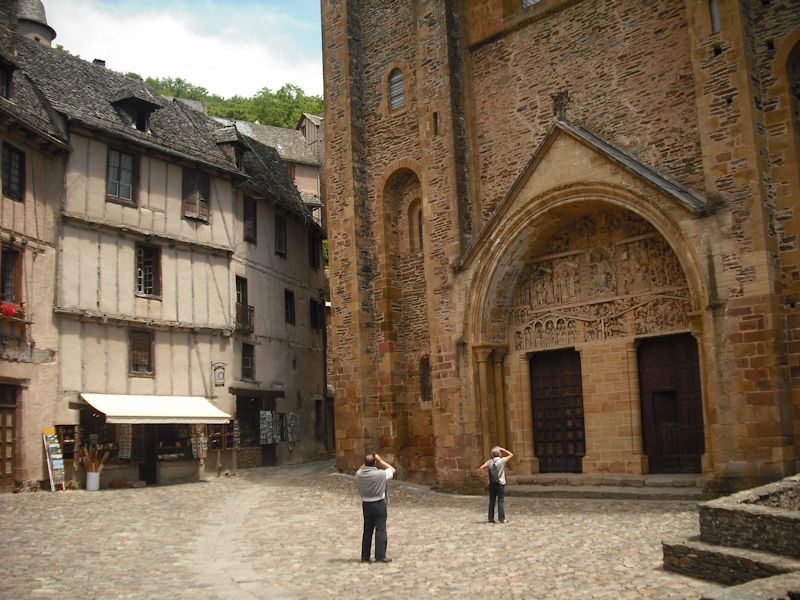
Our first view of downtown Conques, people staring up at the famous Last Judgment tympanum. I got a photo of it, but I wasn't really thunderstruck by it or frightened into changing my lifestyle. My photo got Jesus blessing all the pious dudes, but got cut off on the demons eating the brains out of the sinners, inserting javelins up, well you don't need to hear about that, so I'll skip all that Christian pornographic stuff and move on to the fines herbes omelettes.
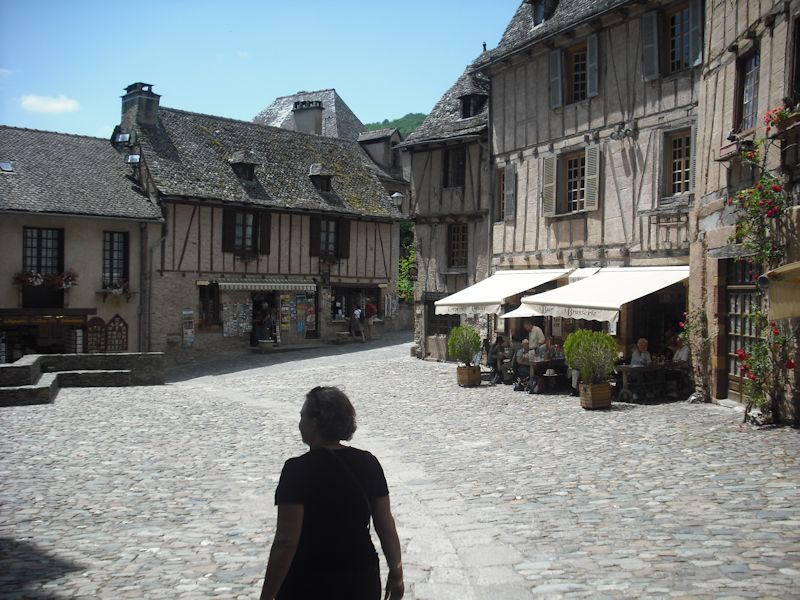
Just here, on the right -- an excellent omelette, and the ambience!
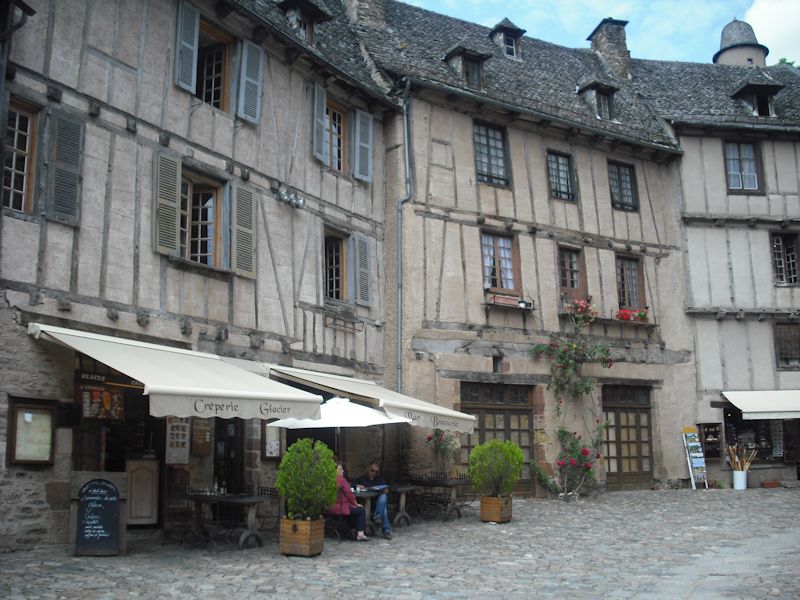
Omelette house

We're in the abbatiale of Ste Foy. That's the roof. It's all very spatious. Completed in 1120 and financed by the proceeds of the tourist trade.
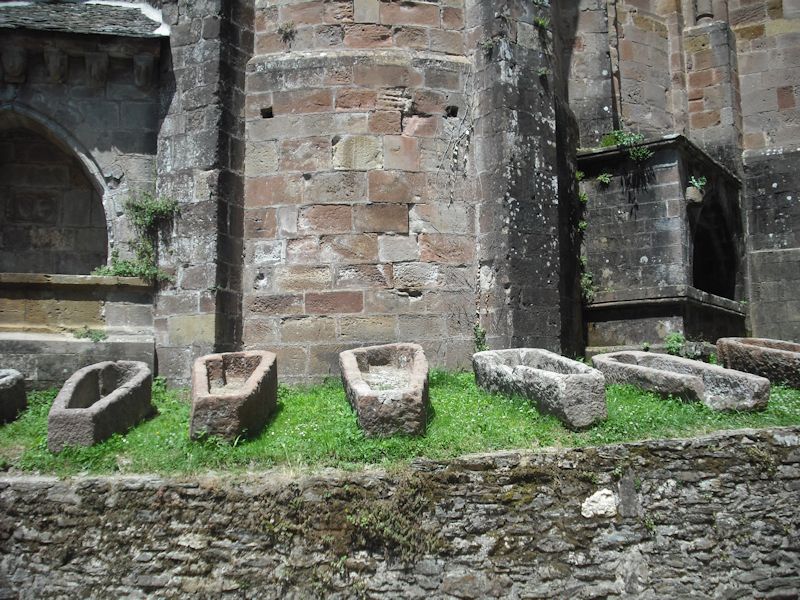
A display of sarcophagi to be buried in, if you're very keen for the Old Ways. (Out of my price range.)
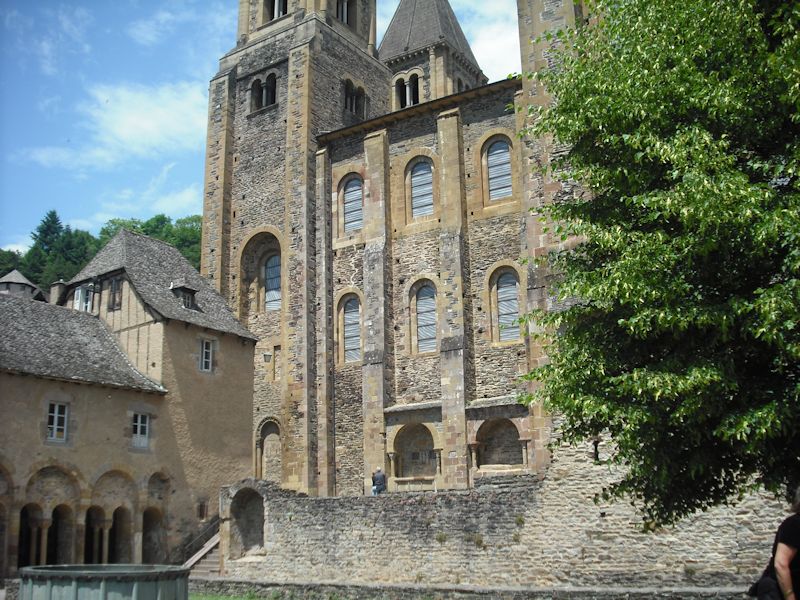
Round back, by the Cloisters, we're waiting to see the Trésor, TONS, well, many kilos of fantastically expensive reliquaries, statues, very elaborate shiny religious knick-knacks and golden gewgaws. Including young Ste Foy herself, though apparently her head didn't originally go with her body.
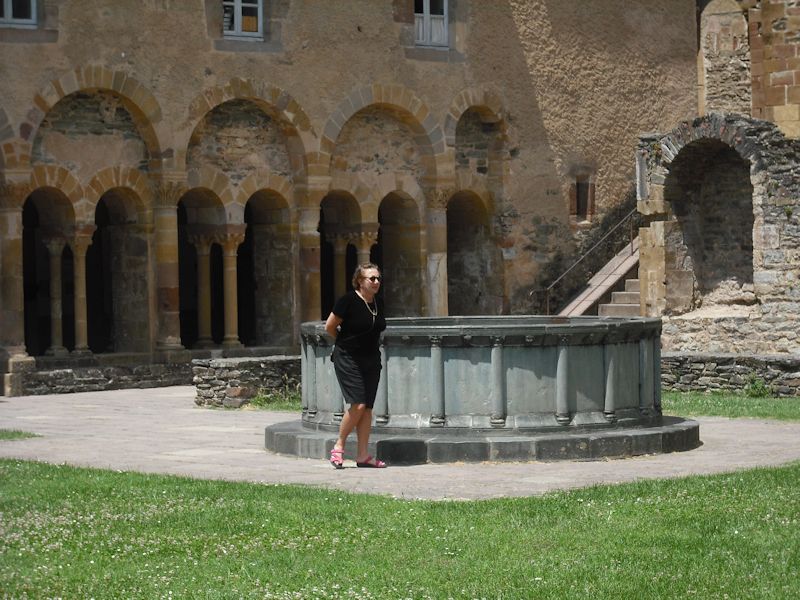
We're pacing about, meditatively, waiting for the holy treasures place to open up so we can pay the fees and go gawk. You should have seen poor, young Ste Foy in her glass case -- it was horrible, bulging lifeless eyes, eerie gold skin like a John Boehner tan, etc.
When the famous pilgrimage destination of Santiago de Compostela in Spain opened for business in 819, religious pilgrims flocked to it from all over Europe, and development-minded civic officials did what they had to do to get their towns put on the pilgrimage map. So a monk at the abbey in Conques (also founded in 819) went underground and joined the monastery in Agen, living unsuspected as a mole there for ten years, gaining their confidence. . . .
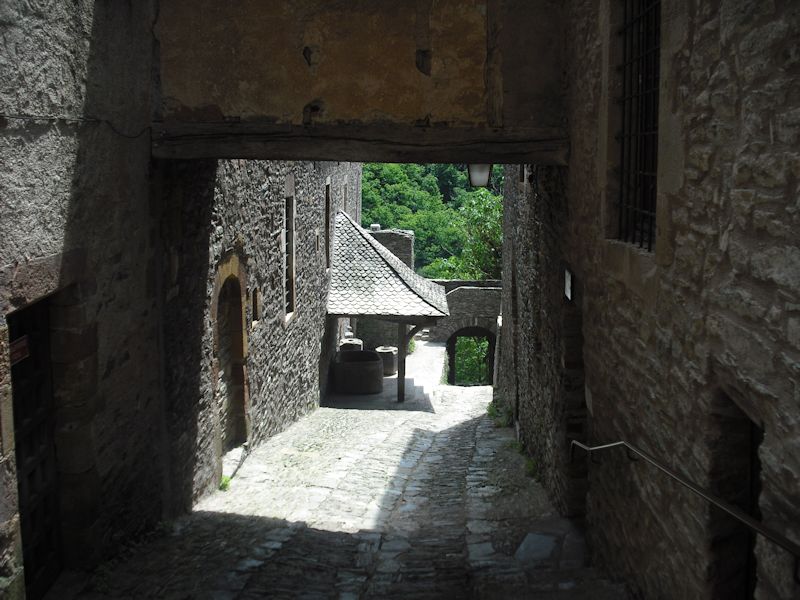
Then in 866 he grabbed Agen's relics of Ste Foy, a "virgin" martyred in anything like AD 287 to 303, and dashed back to Conques where the monks immediately set up shop with the poor girl's remains stuffed into a bulgey-eyed gold statue of herself. Soon the pilgrims began passing through Conques instead of Agen -- all the monks in Conques became so prosperous that they built the present church over the course of the 11th century, completed in 1120 and restored in the 19th century under the direction of Prosper Merimée.
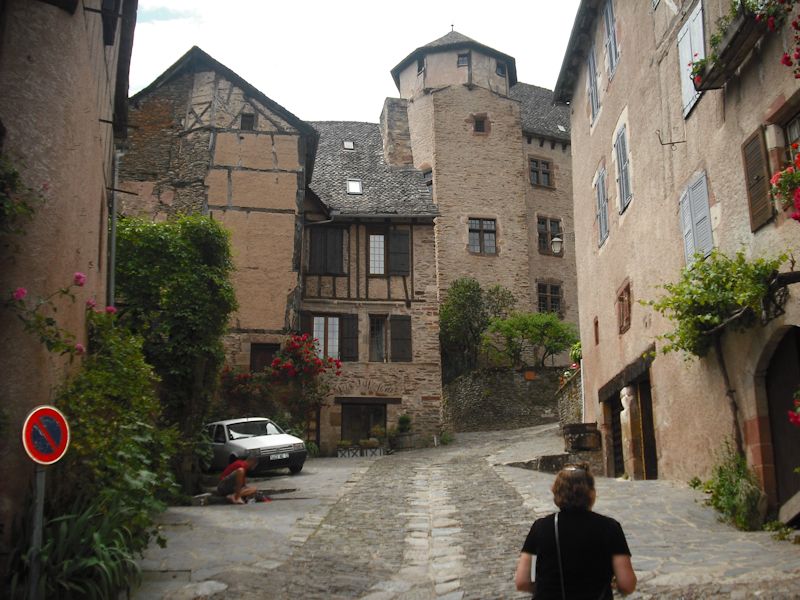
At the moment, though, we're looking for the Centre européen d’art et de civilisation médiévale .... said to be hereabouts but up the hill a ways.
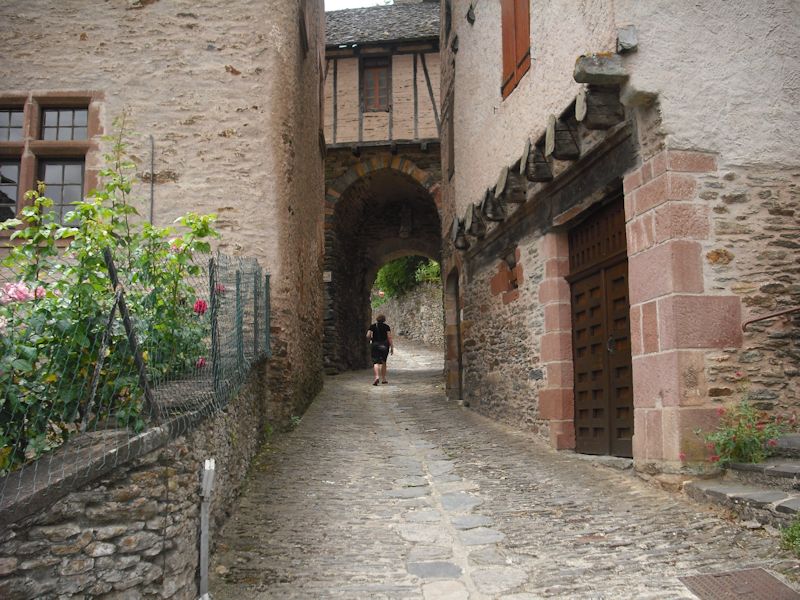
And up a ways more. We had the notion that the European Centre for Medieval Art and Civilization might be able to enlighten us on a number of key points, and would thus be worth the endless climb up through the village.

We did get some good snaps of the Abbatiale belfries from the bats' eye-view.
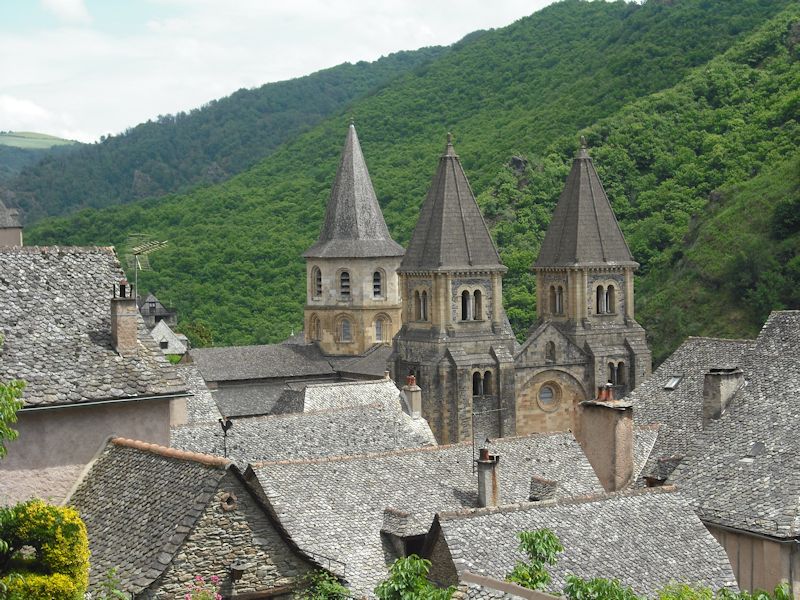
The Abbatiale or abbey-church in Conques (the village, pronounced "conk", is backed into the hillside with the shape of a conch shell, reputedly, thus the name).

The same. At the attractive (and very modern) Centre européen d’art et de civilisation médiévale, a nice lady offered to turn on a video for us, which was about something or other, I've forgotten what, but that was it. In fact, the place is mainly for seminars and what not, and not really suited for walk-in tourists, like us, already thinking more about another omelette.
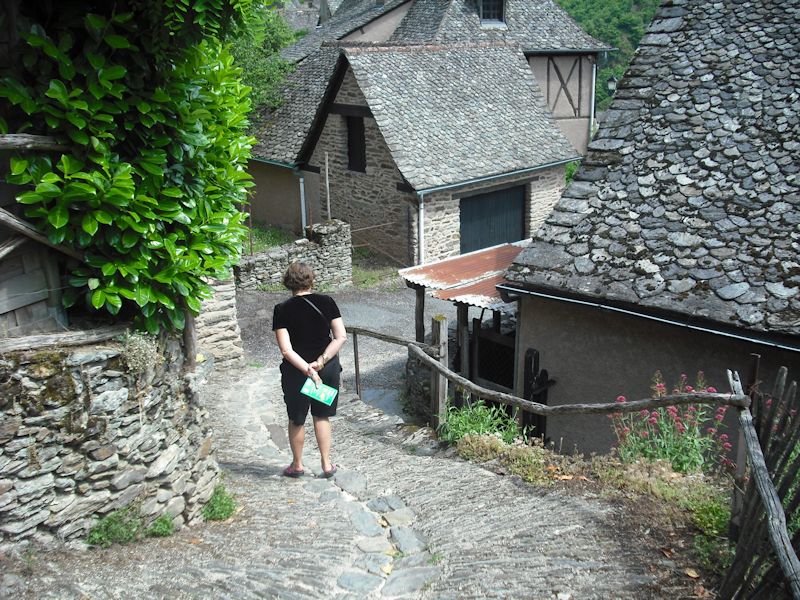
So now, disappointed, we're descending again from the cultural heights.
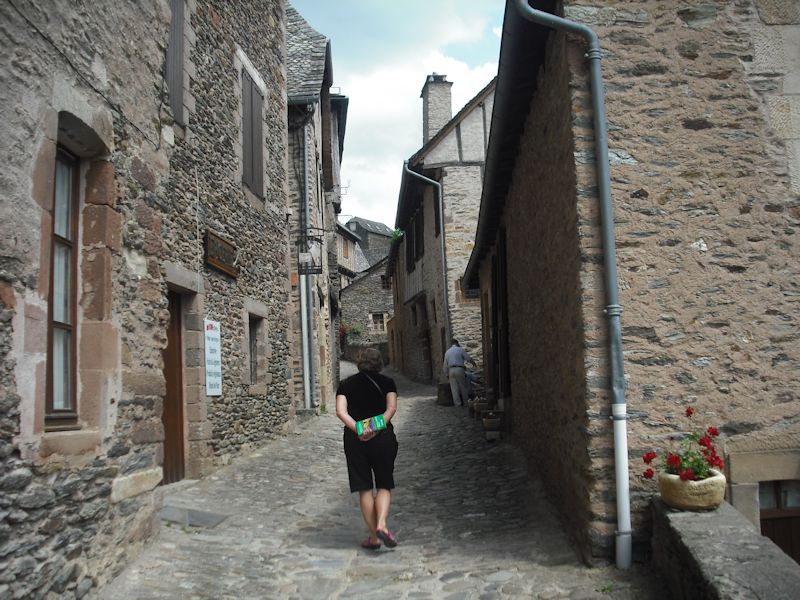
And now ascending again, to visit another part of town

This is the Rue Emile Roudie, charming. Emile would have been proud.

About Sainte Foy, by the way -- are we being too cynical if we feel that, just when the pilgrimage-to-venerate-saints industry was really taking off (Saint James, Santiago, one of Christ's disciples, turned up suddenly, and miraculously, in northwestern Spain a few years earlier), the "remains" of a virgin named "Saint Faith" suddenly turning up in Agen, 500 years after her supposed demise on a hot pagan gridiron, sounds fishy? No paperwork, provenance, corroboration -- just "remains". Maybe we've lost something precious with the passage of centuries.
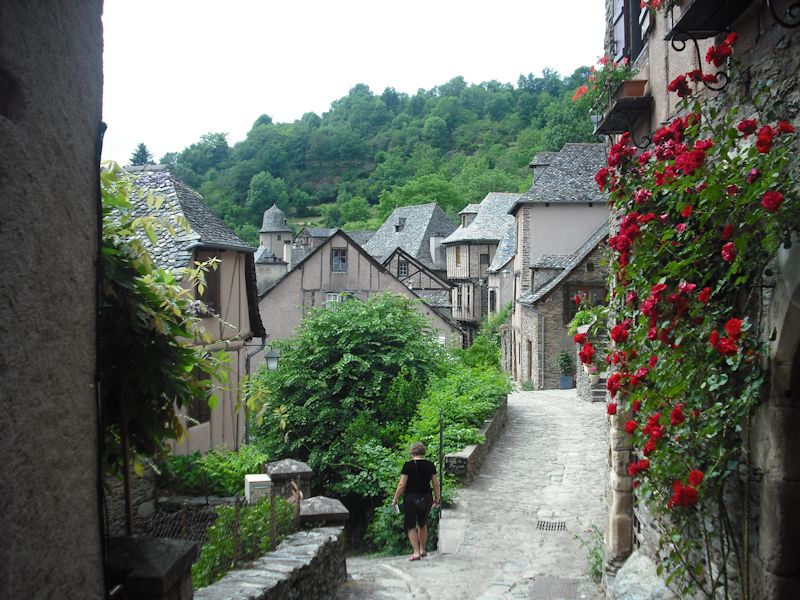
Never mind. In Switzerland we're investing in snowmakers for the ski slopes for pretty much the same reason.

Back down towards the Place de l'Eglise. In fact, relics usually did come with a custody chain of sorts, i.e., a formal certificate from an important bishop (or even the pope) attesting to the relic's authenticity. Without such a guarantee, people might become skeptical about it.

Rooftops

Back for another look at the famous tympanum. Near the omelette place.

Boisterous school groups swirling all up the Rue Charlemagne back to the car park, so we're slipping down the back way.
There's a very interesting discussion of Conques and its treasures in the context of its time in Rosalind and Christopher Brooke, Popular religion in the Middle Ages (1984), pp.26-30 et passim.
Okay, here's the Last Judgment tympanum. The nasty demon stuff is in the lower right. Ouch!
 Dwight Peck's personal website
Dwight Peck's personal website
























